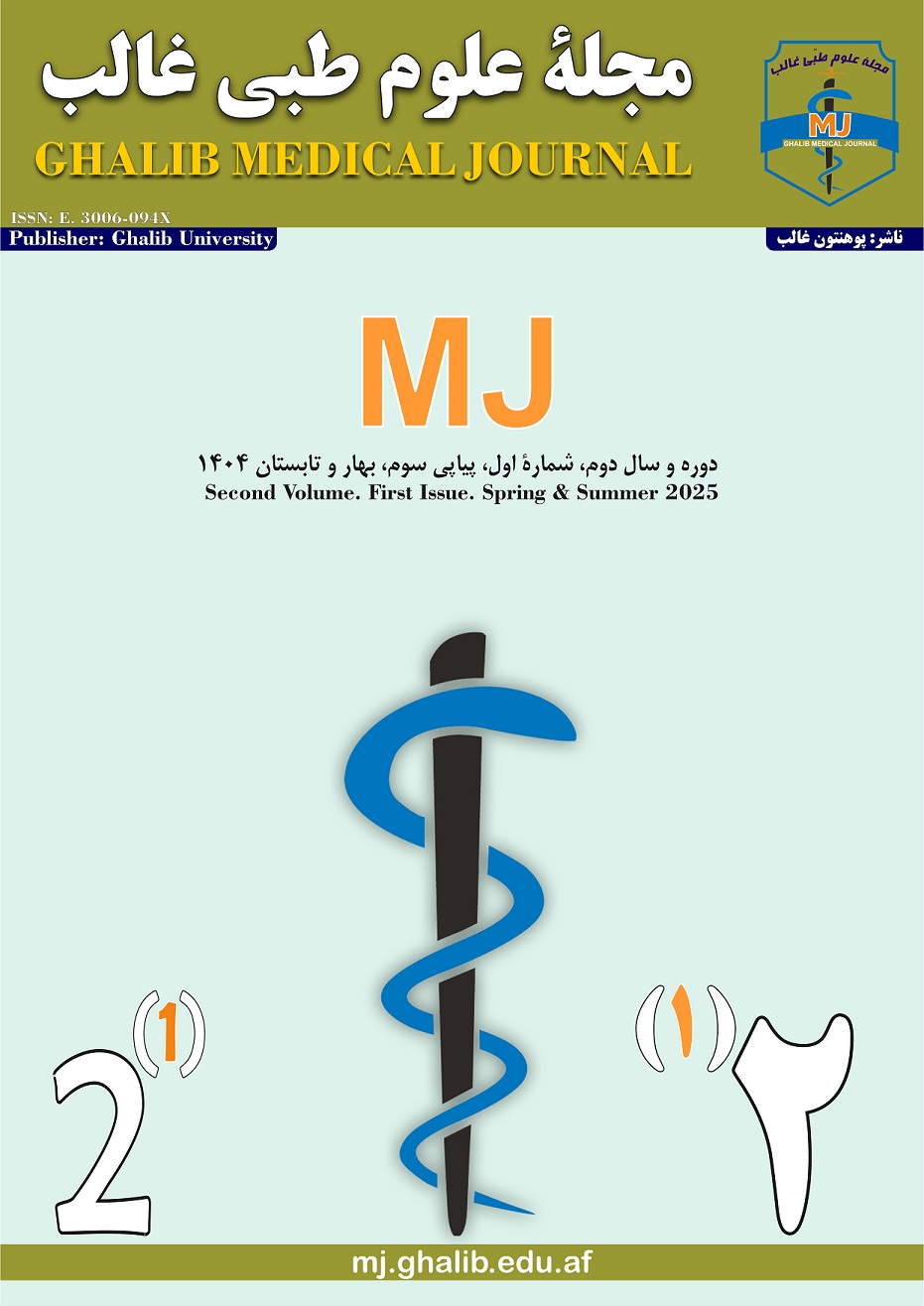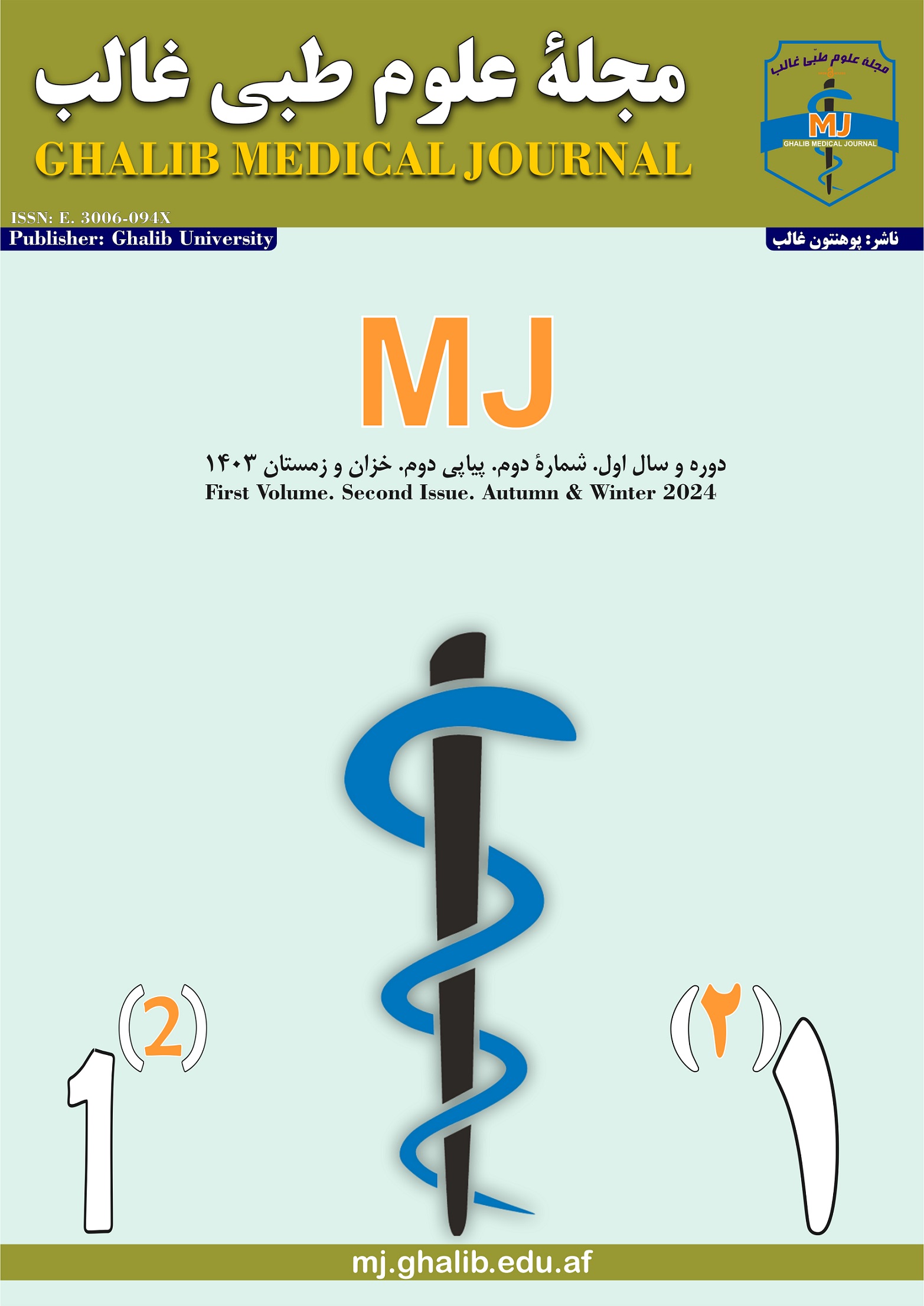Investigation of Bladder Neck Sclerosis Following Open and Closed Prostate Removal Surgeries
DOI:
https://doi.org/10.58342/ghalibMj.V.2.I.1.8Keywords:
Bladder Neck Sclerosis, Blinded Surgical Techniques, Bladder InflammationAbstract
Background: To alleviate obstructive and irritative symptoms of the prostate, various methods of prostate removal operations exist, including invasive, semi-invasive, and minimally invasive approaches. Each of these methods has its advantages and disadvantages. In this review, we have specifically examined one complication: bladder neck sclerosis.
Methods: This study was conducted as a cross-sectional, descriptive, and clinical investigation. It included all patients who underwent open surgery due to complications of BPH. The variables examined in this study included age, education, occupation, addiction, history of urinary tract infection (cystitis), neurogenic bladder, pelvic trauma, posterior urethral rupture, prostatitis, and gonococcal infection.
The study was conducted over two years, from April 1, 2013, to August 28, 2015, and included 826 cases. Participants were categorized into different age groups: 40–49, 50–59, 60–69, and 70–79.
Patients who underwent TURP were found across all age groups. The main variables studied included age, male gender, Afghan ethnicity, occupation, addiction, and smoking status.
Results: This study was performed over two consecutive years at Herat Regional Hospital and some private hospitals in this city. It involved 826 patients aged between 40 and 90 years who underwent open prostate removal surgery. Among these patients, 1-3% developed bladder neck sclerosis post-operation. The leading causes of this condition were incorrect surgical techniques, bladder inflammation due to infection, and exposure of industrial workers to carcinogenic materials.
Conclusion: In prostate removal surgeries, the selection of an appropriate method, the correct use of surgical techniques, and the prevention of infections can help reduce the incidence of bladder neck sclerosis.
References
Sabiston DC. Sabiston Textbook of Surgery. 20th ed. New York: Elsevier; 2017. p. 110-120
Laurence W. Current Diagnosis and Treatment in Surgery. 3rd ed. Isfahan: Khak Publications; 2010. p. 938. (Persian)
Faculty Members of Urology Department, Tehran University of Medical Sciences. Collection of Urology Guidelines. 1st ed. Tehran: Royan Pajooh Publications; 2016. p. 117. (Persian)
Raftery AT. Surgery. 4th ed. Amsterdam: Elsevier; 2011. p. 120-122.
Bostwick DG, Cheng L. Urologic Surgical Pathology. 3rd ed. Philadelphia: Elsevier; 2014. p. 110-120.
Mousavi Bahar SH, Kashkouli AM. Kidney Stones and Urinary Tract. 1st ed. Tehran: Teymoorzadeh & Tabib Publications; 2015. p. 210. (Persian)
Campbell-Walsh Urology. 9th ed. ELSEVIER; 2007. p. 2727.
Simforoosh N, Noralizadeh A, Soltani MH. Comprehensive Book of Urology in Iran. 1st ed. Tehran: Teymoorzadeh Publications; 2013. p. 120-128. (Persian)
Kumar P, Clark M. Kumar and Clark’s Clinical Medicine. 9th ed. London: Elsevier; 2017. p. 110-120.
Novell R, editor. Kirk’s General Surgical Operations. 6th ed. London: Elsevier; 2013. p. 110-120.
Farquharson M. Farquharson’s Text Book of Operative General Surgery. 10th ed. Boca Raton: CRC Press; 2015. p. 110-120.
Downloads
Published
How to Cite
Issue
Section
License
Copyright (c) 2025 غلام ربانی حبیبی, غلام فاروق فایز

This work is licensed under a Creative Commons Attribution 4.0 International License.










